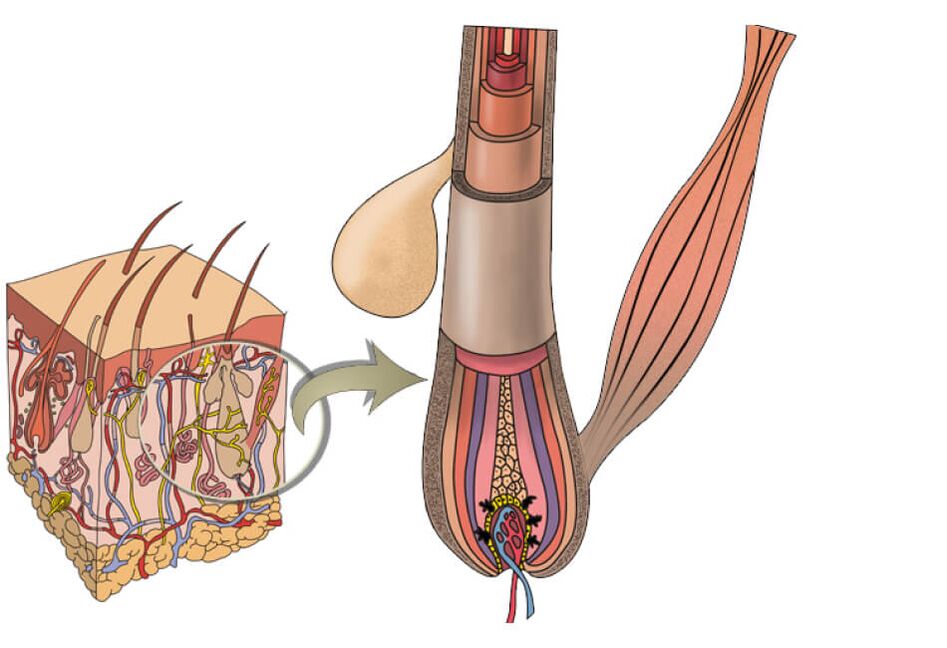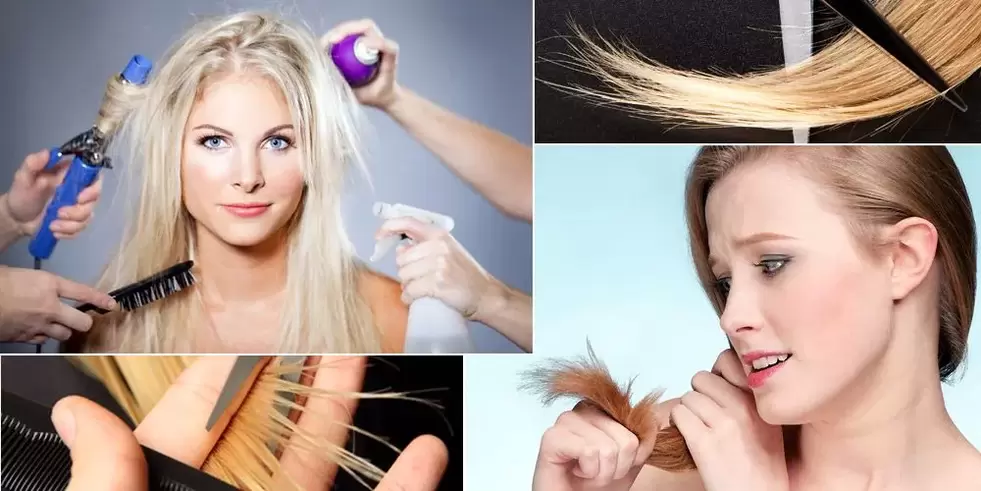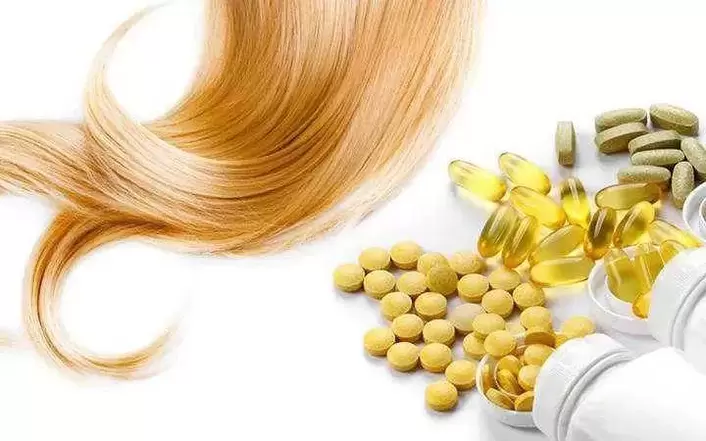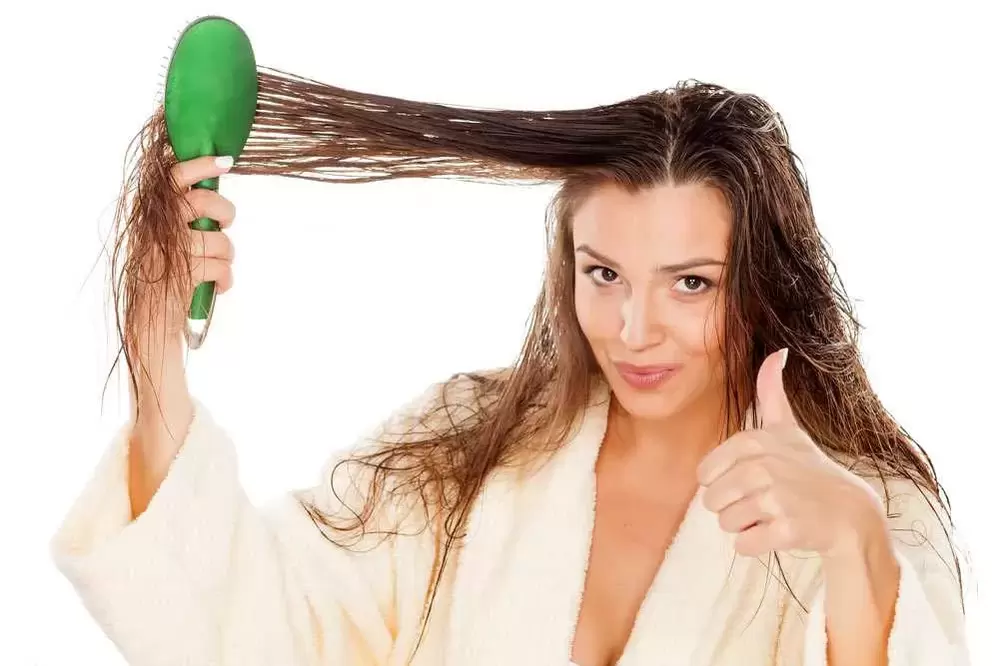
Causes of hair damage

Lack of vitamins and trace elements
lack of moisture
eat harmful food
smoking
Improper care and aggressive hair care procedures
- Poor quality cosmetics. Maybe the shampoo, conditioner, or other product doesn't nourish the tissue enough, contains fewer vitamins than your hair needs, isn't suitable for your hair type, and therefore doesn't address frizz problems. It's important not to let your hair dry out, but over-moisturizing it can also be harmful. If all the necessary fat comes from outside, this will disrupt the natural function of the sebaceous glands. The solution is simple – choose a product that is exactly right for you.
- Improper washing. Don't wash your hair too often - this will only strip away the natural protective layer. Find the optimal frequency of washing your hair.
- overheat. Curling irons, hot air blow dryers, hair straighteners, curling irons and other heat devices evaporate moisture from the surface of the hair. For the same reason, it is not recommended to wash your hair with hot water or walk without a hat in the hot sun. Minimize the use of hot equipment, take at least one week off per month, and use heat protection measures. If you're using a hair dryer, choose the cool setting and blow the wind in the direction your hair grows, from roots to ends - this will smoothen the cuticles.
- Radical program. Perms, dyeing, lightening, bleaching – these procedures destroy the structure of your hair. For example, compositions used for coloring will lift the cuticle scales to wash away the natural pigments. If you can't resist radical surgery, then dye only the regrown ends, use a good dye, and then use an intensive treatment designed for dyed hair.
- Mechanical damage. Do not comb wet hair, rub with a towel, use a hard brush (such as a metal brush), frequently use tight elastic bands, bobby pins, or leave a towel on your head for long periods of time.

disease
How to Restore Damaged Hair

- Accelerates hair growth. Even if you're not ready to cut off the length yet, you'll cut off the ends more often so that you'll gradually remove the damaged thread completely.
- Provides vitamins to the roots. The hair that grows back will be healthy.
- Glue the cuticle scales together. This will be a temporary effect - the scales will still fall apart. But if you keep using good makeup, they will keep sticking together.
- Shampoo. Look for products designed to restore damaged curls - this is often written on the packaging. It would be great if the composition contains oil, glycerin, panthenol. Choose a shampoo based on your hair type and pH level. If you have dry hair, your shampoo should have an acidity level below 5.
- Conditioner Cream. Don't ignore it, as it's this product that seals raised cuticles, makes hair smooth, and helps retain moisture. For dry hair, the pH of the hair cream should be 4 or lower. If acidity isn't stated, check the product's performance. The nourishing conditioner ensures healthy and fast hair growth, the protective conditioner will help if you regularly use heat styling tools and walks in the sun without a hat, and the conditioning conditioner ensures effortless combing, which is great for long, thick hair. This is especially important if you have thin or thin hair, a color-protecting conditioner will help preserve color, thus reducing the frequency of re-dying. Usually, balms are applied only to the lengths and do not affect the roots, but some products act directly on the skin - this is written on the label. Regardless of the effectiveness, you'll want to leave the balm on for a few minutes before rinsing it off.
- mask. They do not fill hair follicles and hair shafts with moisture, but they actively nourish them and fill them with useful substances. But don’t use the mask too often – 2-3 times a week is enough. Otherwise, they will just weigh the hair down, overfeed it, and disrupt the natural mechanisms of conditioning, nutrition, and hydration. As a result, a dependence on the mask can develop, and in some cases, it can even have the opposite effect: products that are supposed to be moisturizing can end up starting to dry out your hair strands. Apply the mask correctly: anti-hair loss products are mainly applied on the scalp, and cosmetic masks are applied on the entire length, 5-10 cm away from the root of the hair.
- Lotions, oils. These products do not need to be washed out, so they continue to work on the hair and allow it to recover well. Oils and lotions applied to damaged dry or wet ends after every hair wash effectively combat the delamination of cuticle cells, that is, they help restore hair structure. Many products have a cumulative effect, which increases if you use cosmetics regularly. But make sure the oil doesn't weigh down your hair; don't apply too much or your strands will look greasy.
home remedies













